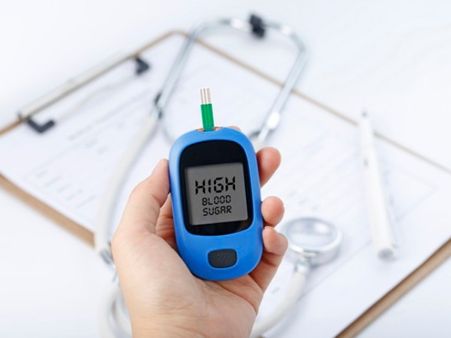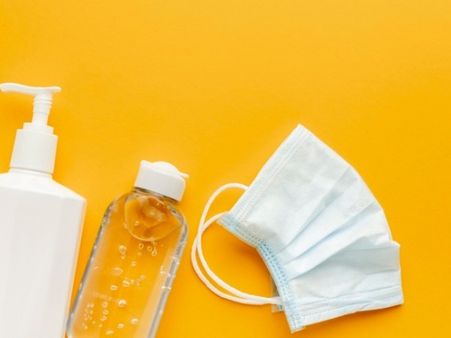Just In
- 38 min ago

- 1 hr ago

- 2 hrs ago

- 2 hrs ago

Don't Miss
- Movies
 Dwarkadish Funeral: Here’s When Late Kannada Actor’s Last Rites Will Take Place
Dwarkadish Funeral: Here’s When Late Kannada Actor’s Last Rites Will Take Place - Technology
 ASUS Zenbook DUO 2024 Launched in India – Check Price, Specs, Where to Buy
ASUS Zenbook DUO 2024 Launched in India – Check Price, Specs, Where to Buy - Automobiles
 Renault Duster And Nissan Models To Feature Turbo-Petrol Engines: Hybrid In The Makes?
Renault Duster And Nissan Models To Feature Turbo-Petrol Engines: Hybrid In The Makes? - Education
 TN MRB Assistant Surgeon Recruitment 2024; 2553 Vacancies, Application Procedure Selection Details and more
TN MRB Assistant Surgeon Recruitment 2024; 2553 Vacancies, Application Procedure Selection Details and more - News
 Punjab Lok Sabha Polls: AAP Names 4 Candidates, Fields MLA Ashok Parashar From Ludhiana
Punjab Lok Sabha Polls: AAP Names 4 Candidates, Fields MLA Ashok Parashar From Ludhiana - Sports
 IPL 2024 Memes: 'Mera Role Model Hardik Pandya...' - DC all-rounder brutally Trolled for following MI Captain
IPL 2024 Memes: 'Mera Role Model Hardik Pandya...' - DC all-rounder brutally Trolled for following MI Captain - Finance
 Indian Rupee Hits Record Low Amid Middle East Concerns And Fed Rate Speculations
Indian Rupee Hits Record Low Amid Middle East Concerns And Fed Rate Speculations - Travel
Maximise Your First Indian Adventure With These Travel Tips
Black And White Fungus Infection: Diabetics At Risk; Sugar Control Is Important After COVID-19 Recovery
After authorities have declared Black Fungus infection an epidemic, medical experts have cited alarms over a white fungus infection discovery. Considered to be more deadly and lethal than black fungus, reports suggest that at least four cases pertaining to the white fungus infection have been detected in COVID-19 recovered patients. However, the number of unknown cases could be more, the report added.
In the event of more cases, doctors around the country have said that more than two-thirds of black fungus patients had uncontrolled diabetes, and two-thirds had received a course of steroid for COVID.
The findings suggest that control of diabetes and judicious use of steroid is necessary to reduce black fungal infection associated with COVID-19.

Black Fungus And White Fungus: What Do We Know So Far?
As reports had previously suggested, the black fungus infection is rare but not a new one. Mucormycosis, previously called zygomycosis, is a severe but rare fungal infection caused by a group of moulds called mucormycetes.
Scientifically termed as Mucormycosis, the black fungus infection symptoms are face numbness, one-side nose obstructions or swelling of eyes, or pain. Mortality has been reported in the range of 50 per cent (five patients), and 50 per cent of the patients have lost their eyesight permanently and required critical care support due to associated complications [1][2].

Like the black fungus, the white fungus is also more likely to affect people with compromised immune systems, pre-existing medical conditions, AIDS, a recent kidney transplant or diabetes [3].
It was observed that all four patients who had white fungus infection showed COVID-like symptoms but were found to be negative. The white fungus can affect the lungs and other parts of the body, including nails, skin, stomach, kidney, brain, private parts, and mouth [4].

COVID-19 patients are more prone to black and white fungus infection as it affects the lungs, and therefore similar symptoms develop [5]. Moreover, the white fungus infection could affect the vital functioning of the body in comparison to the black fungus, which affects only the sinus and lungs.
Several health experts and doctors have stated that, unlike the black fungus, the white fungus infection spreads more rapidly to the vital organs, including the lungs, kidneys, intestines, stomach, genitals, and other body parts as the nails, and causes widespread infection [6].
Other reports also showed that the CT scans showed severe lung damage, which is not due to COVID but due to the white fungus.

People With Diabetes At Risk; Sugar Control Is Key For Fungal Infection Prevention
According to recent findings, people either develop this infection while recovering from COVID-19 infection or during COVID treatment. The commonality found among all these cases where that they are all diabetics [7].
The doctors said, "you can protect yourself from getting this infection by keeping your sugars tightly controlled during Covid infection, checking sugars more frequently, using mask consistently, and maintaining personal hygiene." They added, "steroids for Covid treatment should be used judiciously and strictly under doctor's supervision" [8].

A COVID-19 recovered patient with diabetes cannot visit hospitals due to the home quarantine rules. Doctors have suggested some home tips to keep a check on sugar.
Tips to keep sugar in control to prevent black/white fungus infections for individuals with diabetes:
- Do low-impact exercises such as walking and lifting light weights. This can help with weight management, which can improve your blood sugar control.
- Improving your immunity is the most important point for post-COVID patients. The fungus can attack if immunity is lowered.
- Regularly check your sugar levels.
- Pay extra attention to your glucose control. Regular monitoring can help avoid complications caused by high or low blood glucose.
- Wear masks at all times. Prolonged use of masks to be discouraged as any cloth mask kept in a damp place with prolonged use may catch fungus.
- Choose attire that does not expose your skin to the soil when gardening or handling soil or manure.
- If the individual experiences any symptoms like sinusitis, visit an ENT specialist.

Some extra tips for people with diabetes...
Reports developed from unpublished medical studies have stated that diabetic patients who have recently recovered from COVID-19 infection after being treated with steroids especially remain at risk of contracting mucormycosis or black fungus infection [9].
Over 80 per cent of the black fungus infection reported are among diabetic COVID-19 survivors. Others who remain at the risk of contracting the black fungus disease include the organ transplant and cancer patients being given immunosuppressant drugs.

Diabetes And COVID-19
Diabetic individuals, especially ones with poor glycaemic control, have an increased risk of contracting the infection. People with diabetes are considered a high-risk group by the Centers for Disease Control and Prevention (CDC) [10].
With the immune system being compromised due to chronic diseases, diabetic individuals become easy preys to the virus. And it is the same case for people with well-managed diabetes as well.
Steps To Reduce COVID-19 Exposure For Diabetics
- Wash your hands thoroughly and regularly with soap and water.
- Avoid touching your eyes, nose or mouth.
- Sneeze and cough into your sleeve.
- When using tissues, immediately dispose of them into the garbage as soon as possible and wash your hands afterwards.
- Regularly clean commonly used surfaces and devices you touch or handle.
- Try to avoid contact with people who are showing symptoms of respiratory illness, such as coughing.
- Don't share food, glasses, towels, tools etc.
- Avoid travelling.
- If you have a fever, cough and difficulty breathing, seek medical care early and share your previous travel history with your healthcare provider.
- If you have a scheduled visit with your healthcare provider, contact them via phone or online portal first to see what other options you may have.


On A Final Note…
As per preliminary findings, white fungus infections do not show visible symptoms like black fungus infection.
Frequently Asked Questions
Q. Should diabetics continue insulin during the COVID-19 pandemic?
Ans: The presence of diabetes and poorly managed glucose levels in people with COVID-19 have led to higher death rates and longer hospital stays. Doctors stress if insulin therapy is prescribed, it should not be stopped.
Q. Do people with diabetes have a higher chance of serious complications from COVID-19?
Ans: People with diabetes are more likely to have serious complications from COVID-19. In general, people with diabetes are more likely to have more severe symptoms and complications when infected with any virus.
-
 healthExclusive: World Oral Health Day 2024: Doctor Shares How Diabetic Patients Can Maintain Their Oral Health
healthExclusive: World Oral Health Day 2024: Doctor Shares How Diabetic Patients Can Maintain Their Oral Health -
 healthWhat Is VIP? It Is Not What You Think! This One Is Connected To Blood Glucose, Here's What You Need To Know
healthWhat Is VIP? It Is Not What You Think! This One Is Connected To Blood Glucose, Here's What You Need To Know -
 pregnancy parentingWhat Are The 4 Must Have Vitamins For Kids With Diabetes?
pregnancy parentingWhat Are The 4 Must Have Vitamins For Kids With Diabetes? -
 healthDoes This Everyday Cooking Ingredient Trigger Diabetes?
healthDoes This Everyday Cooking Ingredient Trigger Diabetes? -
 healthRoller Coaster Effect In Diabetes: Why Does My Blood Sugar Level Go Up And Down, How To Stop It
healthRoller Coaster Effect In Diabetes: Why Does My Blood Sugar Level Go Up And Down, How To Stop It -
 healthSinger Shakira Loves These 2 Indian Sweets! How To Make It Diet-Friendly?
healthSinger Shakira Loves These 2 Indian Sweets! How To Make It Diet-Friendly? -
 healthWorld Diabetes Day 2023: 3 Weird Things That Can Put You At Risk Of Developing Diabetes
healthWorld Diabetes Day 2023: 3 Weird Things That Can Put You At Risk Of Developing Diabetes -
 healthWorld Diabetes Day 2023: Daily Habits That Make One At Risk Of Diabetes
healthWorld Diabetes Day 2023: Daily Habits That Make One At Risk Of Diabetes -
 wellnessWorld Diabetes Day 2023: Avoid These Common Mistakes When Testing Blood Sugar Levels
wellnessWorld Diabetes Day 2023: Avoid These Common Mistakes When Testing Blood Sugar Levels -
 healthDiwali 2023: Kalakand Recipe For Diabetic People; It Is Sugar-Free & Keto-Friendly
healthDiwali 2023: Kalakand Recipe For Diabetic People; It Is Sugar-Free & Keto-Friendly -
 healthHow Poor Air Quality During Can Raise Your Diabetes Risk
healthHow Poor Air Quality During Can Raise Your Diabetes Risk -
 healthWhip Up These 3 Diwali Sweets For Your Diabetic Mom Over 40
healthWhip Up These 3 Diwali Sweets For Your Diabetic Mom Over 40


 Click it and Unblock the Notifications
Click it and Unblock the Notifications



